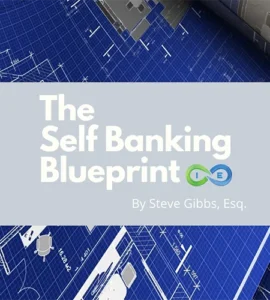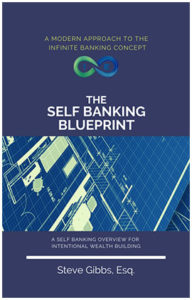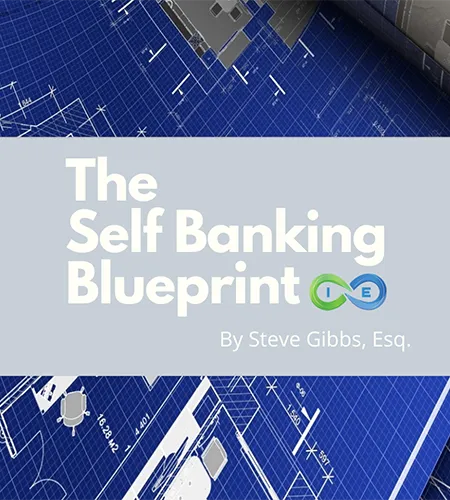Is Life Insurance an Investment?
Life insurance does not meet the criteria of an investment. Rather than call life insurance an investment, it would be more accurate to call it a savings vehicle with a death benefit.
However, due to some amazing features and advantages, life insurance is the best vehicle for building wealth when designed and used properly, specifically when using it in conjunction with infinite banking.
Now, you may have noticed that there’s this funny thing about financial advisers: there’s not much they all agree on. Sure, there are a few general platitudes they all nod their heads to.
“Diversify your portfolio,” for instance.
But, even then, there are some contrarians who will tell you to set back an emergency savings, invest everything else in indexed mutual funds, and never look back.
When it comes to whole life insurance, the popular consensus among financial pundits seems to have become that it’s only useful for the super-rich.
Now, that view wasn’t nearly so common among earlier generations who had been through a few stock market divebombs and who saw a whole life insurance policy as a great way to accumulate wealth.
But, nowadays, the party line among self-proclaimed consumer finance experts is that, unless you’re a multi-millionaire, you’re better off buying term and investing the rest in the stock market.
Nonetheless, whole life does still have its advocates, who emphasize the guaranteed returns, versatility, and tax advantages.
Realistically, though, there’s no one-size-fits-all “correct” position because—when it comes to personal finance generally and life insurance in particular—there are a tremendous number of variables affecting eventual outcomes.
Your age, health status, current assets and liabilities, income and projected income, family situation, and even personality (among other things) all need to be considered when evaluating whether whole life insurance is a good investment for you.
So, let’s take a look at some of the advantages—and some of the drawbacks—of life insurance as an investment.
Cash Value Life Insurance vs Term Life
Permanent life insurance policies, aka cash value life insurance, differ from term life insurance in a few key ways.
First, cash value life insurance provides permanent coverage—as long as you pay the premiums and don’t cash out, the policy is guaranteed for your entire lifetime. This is true for all types of permanent coverage, including universal life insurance and whole life insurance.
With a term policy, you either die or reach a point where you no longer have coverage. In many cases, you can renew the policy at the end of the term, but the premiums usually go up, and sometimes the insurance company will opt against renewal.
Cash Value Component
For our purposes, the more important difference is that, along with providing a death benefit, permanent cash value life insurance also has a savings feature where all the cash value growth takes place.
A policy’s cash surrender value gradually builds up with each premium payment, earning additional, tax-deferred interest in the process. And with dividend paying whole life insurance policies, dividends paid by the insurer further add to the value.
The cash value growth a policy accrues can be accessed in several ways.
- You can simply surrender the life insurance policy and accept a check from the insurer for the balance.
- Or you can convert the policy into one of the many annuity options offered by life insurance companies through a 1035 exchange.
- A partial withdrawal allows you to take out some cash but keep the coverage in place.
- Or you can use the cash value component as security for a low-interest loan by borrowing against your life insurance.
- If you want to keep some coverage but no longer need quite as much, you can elect a “reduced paid-up” option—effectively trading a reduction in the future death benefit for a waiver of any obligation to make any additional premium payments.
Permanent coverage also has numerous optional riders that can add to a policy’s value or tailor it to your specific situation. Popular riders include long-term care and chronic or terminal illness riders that accelerate a policy’s death benefit if the policyholder ends up needing long-term care or is diagnosed with a serious illness.
Is Life Insurance an Investment?
Term life insurance is not an investment. It is more like a financial hedge, that protects a loved one financially, providing income replacement if you die sooner than expected.
And permanent life insurance doesn’t meet some technical definitions of “investment” and is probably better thought of as a savings vehicle with liquidity and some investment-like characteristics.
Also, a big part of a policy’s value comes from the insurance component (i.e., the insurance company’s promise to pay the death benefit to your named beneficiary when you die).
With that said, though, whole life is a financial asset that appreciates in value. It can be an important part of a retirement plan, estate plan, or both, while also providing protection for loved ones in the event of untimely death.
Three Types of Growth
Depending on the specific life insurance policy, growth occurs at a guaranteed, consistent rate (“fixed”); based on investment performance (“variable”); or in line with an equity index linked to the policy (“indexed”).
A fixed policy provides a good hedge against market volatility and economic downturns but can be vulnerable to periods of high inflation, though increasing dividends or inflation-adjustment riders are usually available for an extra charge upfront.
With a variable life insurance policy, cash value is allotted to “sub-accounts” of different investment options offered by the insurer and selected by the policyholder. Variable policies have more upside for growth, but there’s also some risk if investments perform poorly.
Indexed life insurance policies tie growth into the performance of a specific equity index, allowing for greater gains in bull markets. Typically, the insurance company guarantees a small minimum rate of return—or that the policy won’t decrease in value—in exchange for a cap on earnings.
Life insurance policy growth is tax-deferred—meaning you’re not taxed on the growth until the money is figuratively in your pocket. And if the death benefit is triggered, it isn’t taxable income to beneficiaries.
Advantages of Permanent Life Insurance as an Investment
Setting aside the peace-of-mind value that comes from knowing your loved ones will receive a substantial, tax-free cash payment from the life insurance death benefit if anything ever happens to you, a whole life insurance policy provides a secure, flexible means of earning guaranteed growth as you save for retirement.
Whole life insurance long-term returns are respectable coming in around 4-5% depending on the policy and company, and the cash value is usually safe due to state creditor protections and can often survive a bankruptcy filing.
Principal Protection and Guaranteed Growth
Starting at the most fundamental level, “principal protection” is simply the idea that your money will still be there when you need it. That is, you’re not going to lose money.
With a highly rated life insurance company, there’s essentially zero risk that the whole life policy won’t grow as guaranteed. In the extremely unlikely event that a highly-rated insurer goes belly-up, state guaranty associations cover policyholder losses—typically up to the amount invested in the life insurance policy.
With a fixed whole life policy, growth accrues at a guaranteed rate, and interest compounds. Returns are not affected by stock market volatility, bear markets, or economic downturns.
Even variable and indexed policies usually have risk-mitigation features. Typically, the insurer guarantees that the policy won’t incur losses beyond a certain point, won’t decrease in value at all, or will grow at a minimum rate—depending on the policy and company.
Growth rates aren’t as high as long-term, historical stock-market returns, but the idea is that you’re trading some upside for the elimination of risk.
With this in mind, a whole life policy can serve as a good hedge against down markets as part of a balanced retirement plan.
THE ULTIMATE FREE DOWNLOAD
The Self Banking Blueprint
A Modern Approach To The Infinite Banking Concept

Liquidity
A permanent policy’s cash value is surprisingly easy to access.
Realistically, if you have an emergency situation and need to liquidate a policy’s cash value quickly, you just submit some paperwork to the insurer, and you’ll have the funds in relatively short order.
By contrast, illiquid investments like real estate can take months or longer to convert to cash and require additional transaction costs in the process.
Even CD’s generally have a penalty if you cash out too early.
Life insurance, though, allows for quick, cheap access to cash, and, if you do it through a life insurance policy loan, you can even keep the underlying coverage in place.
The relative liquidity allows cash value to act as the functional equivalent of a savings account, while usually earning substantially better returns.
On the back end, life insurance provides estate liquidity that may be needed for taxes, administrative costs, or final medical bills.
The liquidity provided by the insurance protects other assets—like real estate or a family business—from being sold to pay creditors, the IRS, or other estate costs.
Because estate sales often need to be rushed, they frequently don’t garner full value for assets not sold on a regular market.
Thus, life insurance helps protect assets you want to keep in the family and maximize your heirs’ gross inheritance.
Credit Access
Life insurance policy loans allow ready access to credit at low-interest rates.
Repayment terms are flexible, or even optional, though any policy loans outstanding at the time of the insured’s death reduce the total payment to the beneficiary.
Alternatively, cash value can act as collateral for another lender or for a line of credit.
Either way, permanent life insurance can facilitate access to cheaper financing if an attractive investment opportunity presents itself, or if you need cash but don’t want to liquidate other assets.
Tax Benefits
Growth earned in a whole life policy’s cash value account is not taxed until you actually withdraw the money. This lets you defer taxes from your younger working years (when you are probably paying a higher rate) to retirement (when you will probably be taxed at a lower rate).
And the money you don’t pay the IRS now stays in the policy earning additional interest.
When you do pull money out of a policy, life insurance is taxed on a FIFO (“first in, first out”) basis. Initial withdrawals are treated as tax-free “return of premium,” as are dividends paid by the insurer.
If you annuitize cash value upon retirement through a 1035 exchange, the income tax will be spread out over the rest of your life expectancy.
Or, with careful planning, you can use a combination of withdrawals and untaxed policy loans to avoid most or even all income tax on policy distributions during retirement.
If your focus is more on estate planning than retirement planning, death benefits from life insurance are not taxable income to beneficiaries. And, when structured properly, a policy can reduce or eliminate taxes owed by the insured’s estate.
Creditor Protection
Laws governing exemption of assets from creditor attachment vary considerably between states and don’t apply to the IRS.
In general, though, the funds in the cash value account is at least partially exempt.
So, if a creditor obtains a judgment against a policyholder, the creditor cannot reach the policy’s cash value account to satisfy the judgment up to the amount of the exemption.
In most states, creditor exemptions are also applied in bankruptcy, and assets held as exempt can therefore survive a bankruptcy discharge.
A few states, including Florida, provide a complete exemption for life insurance, regardless of the actual cash value.
In these states, the policy’s face value and cash value are irrelevant—it’s all exempt.
As a result, whole life can ensure a minimum level of financial security while other assets are potentially exposed. Even in fairly creditor-friendly jurisdictions at least some cash value is usually exempt.
Drawbacks of Life Insurance as an Investment.
Inevitably, there are also drawbacks to permanent life insurance.
As has often been noted, whole life premiums are substantially higher than term coverage with a comparable death benefit. And this makes sense—premiums for a life insurance policy that offers a death benefit and savings component should be higher than a policy that solely provides death benefits. The policyholder is getting more.
How important of a factor premium cost is depends on your specific needs. If you absolutely need income replacement to protect your family if you die, but you can’t afford the premiums for a permanent policy that provides sufficient coverage, you’re probably better off going with term.
Likewise, if the death benefit is all you’re really worried about, you only need protection for a defined period, and retirement planning is less of a priority, term might be the better pick.
As an investment, permanent life insurance takes a little while to warm up before you start seeing strong performance.
Early premiums are generally weighted more toward underwriting costs, and then, once the policy has been in place a while, a higher percentage is applied toward cash value.
It also takes some time for the full effects of dividends, deferred growth, and compound interest to really kick in.
So, if you don’t plan on keeping the policy in place long-term, you’re probably better off with a CD or similar financial instrument that isn’t as back-weighted as whole life.
Whether whole life’s overall returns look good depends on what you’re comparing them to.
In all likelihood, a policy will not match the long-term growth of the NASDAQ. In part, though, you’re paying the insurer to compensate for its bearing the risk of poor performance.
When you compare whole life to savings vehicles and investments with comparable risk profiles (like CDs, savings accounts, and treasuries), the long-term returns earned by whole life start to look pretty solid.
Critics of permanent life insurance also like to point out that it has relatively high fees.
Of course, the precise fees depend on the policy and the company.
In general, though, the simpler to administer a policy is, the lower the fees are.
Term coverage is very simple, so it has low fees.
A fixed whole life policy is straight-forward, albeit more complex than term. So, the fees are usually lower than other permanent policies but higher than term.
On the other hand, variable policies have more moving parts and therefore higher fees.
It’s worth noting that you don’t pay these fees out-of-pocket. Instead, the fees reduce the amounts that might otherwise have been applied toward the policy value. So, if a policy’s higher growth-rate outpaces its additional fees, it might end up being a better option than an investment with lower fees on paper.
Ultimately, after looking at the advantages and drawbacks of permanent life insurance as an investment, we end up right back where we started. It really all depends on your individual situation and goals.
Whole life can be a stable, flexible asset that provides portfolio stability, allowing you to explore more high-risk/high-reward investments as you plan for retirement.
But, if acquiring the security of a death benefit until the kids are grown is all you’re really concerned with at this point, a term policy will likely meet your needs at lesser expense.
An experienced planning professional can help you decide whether permanent life insurance is a good choice for your individual financial objectives.
THE ULTIMATE FREE DOWNLOAD
The Self Banking Blueprint
A Modern Approach To The Infinite Banking Concept





